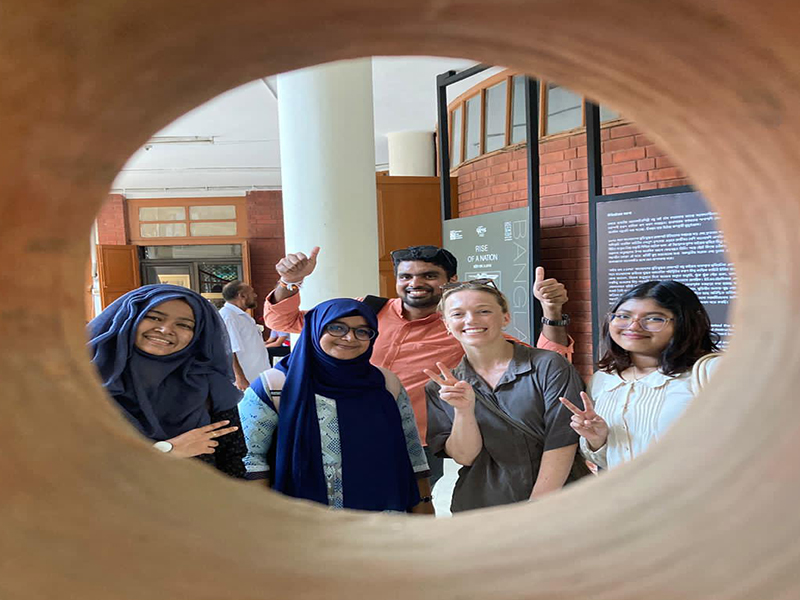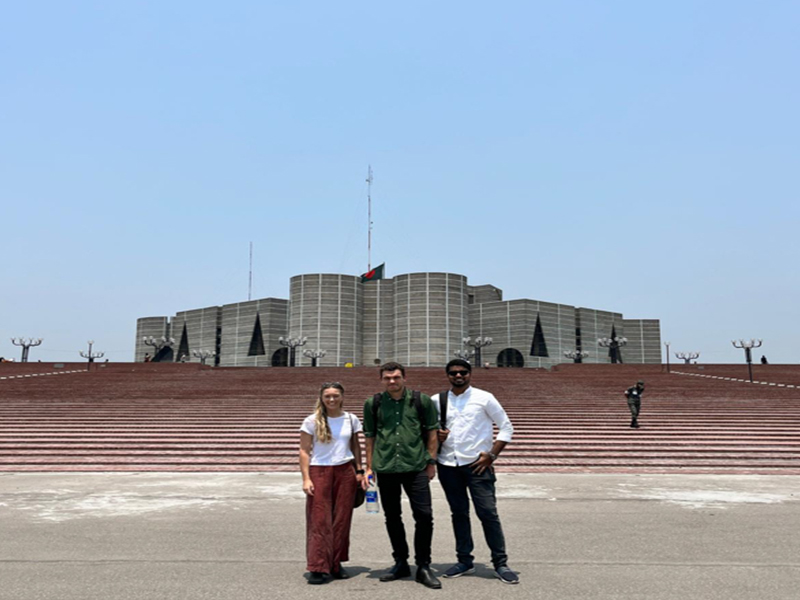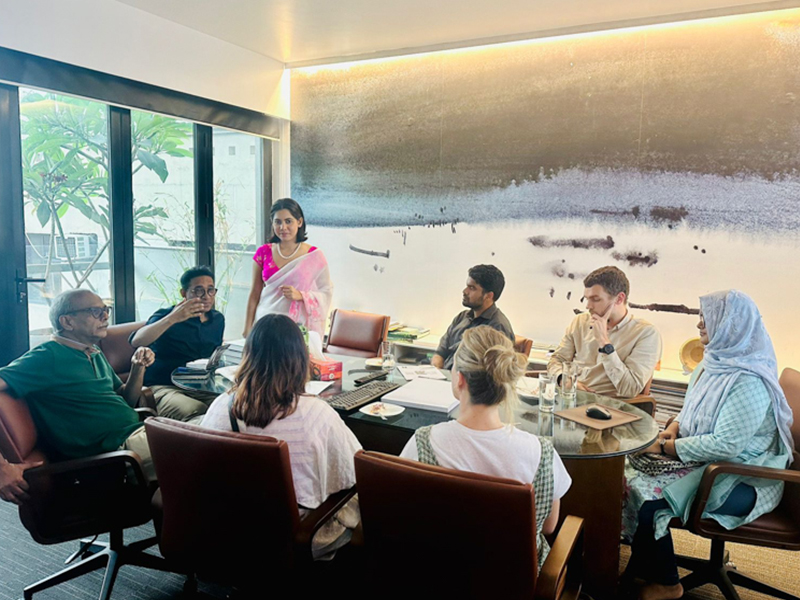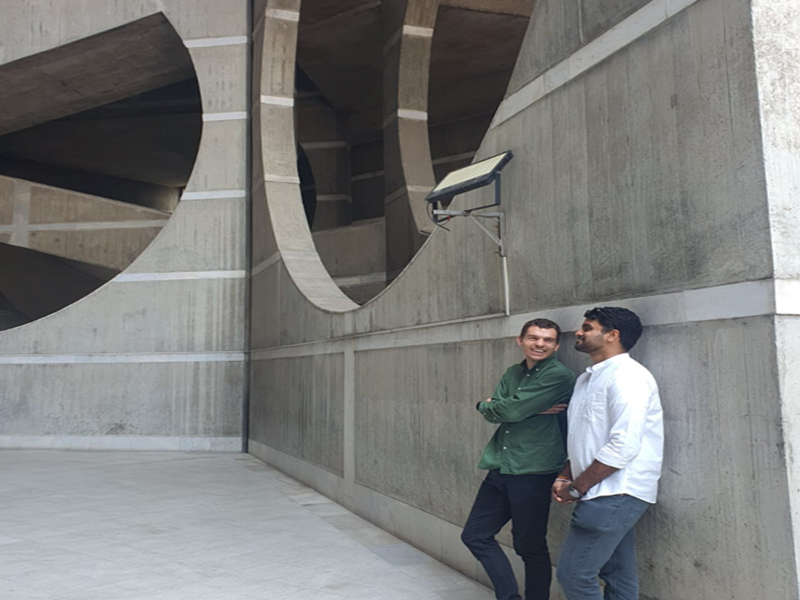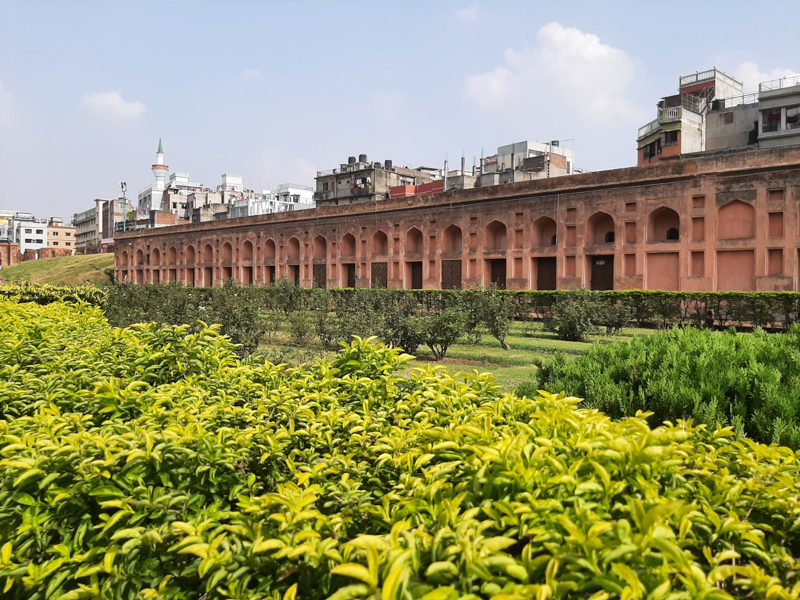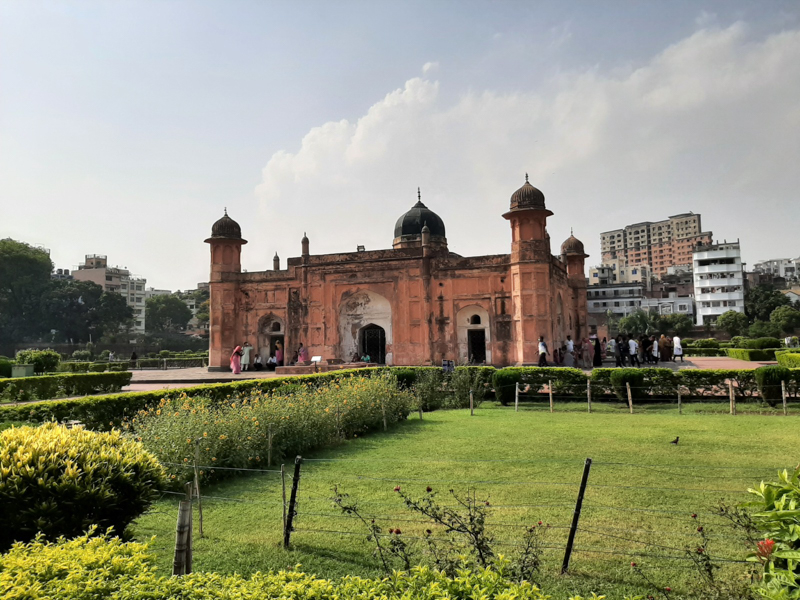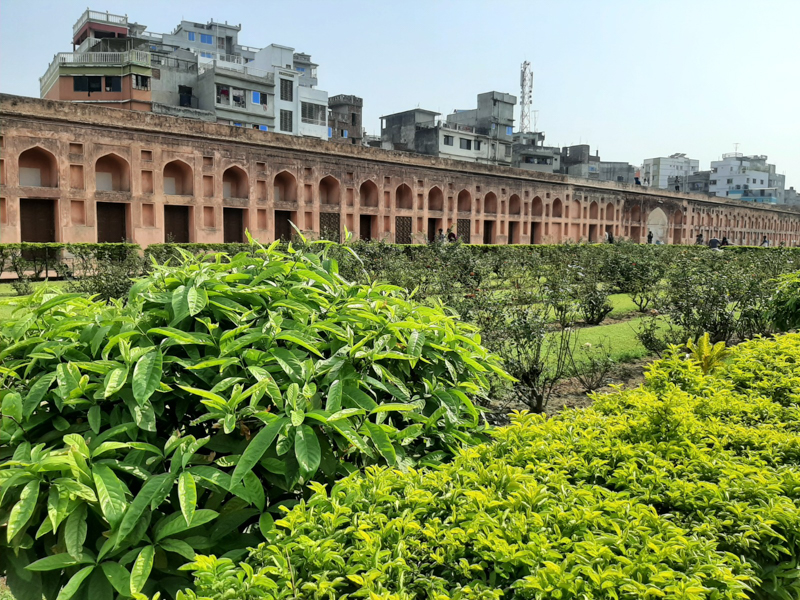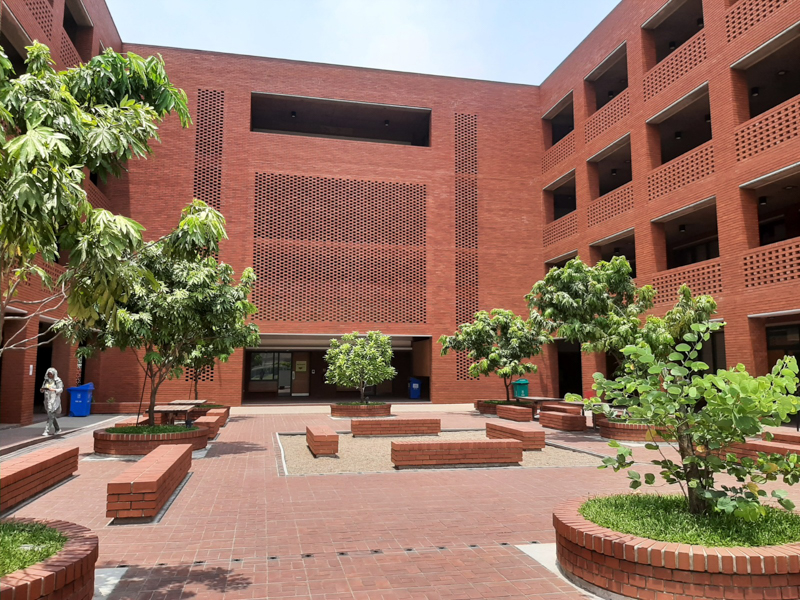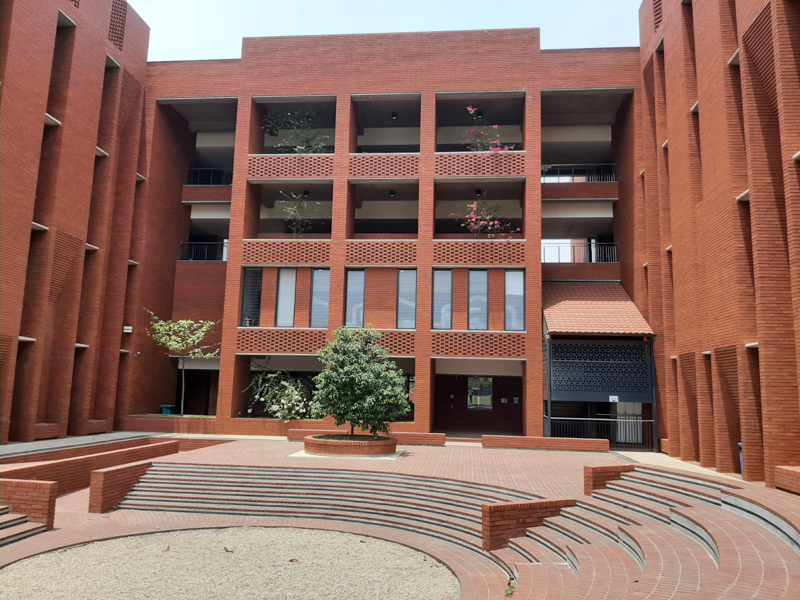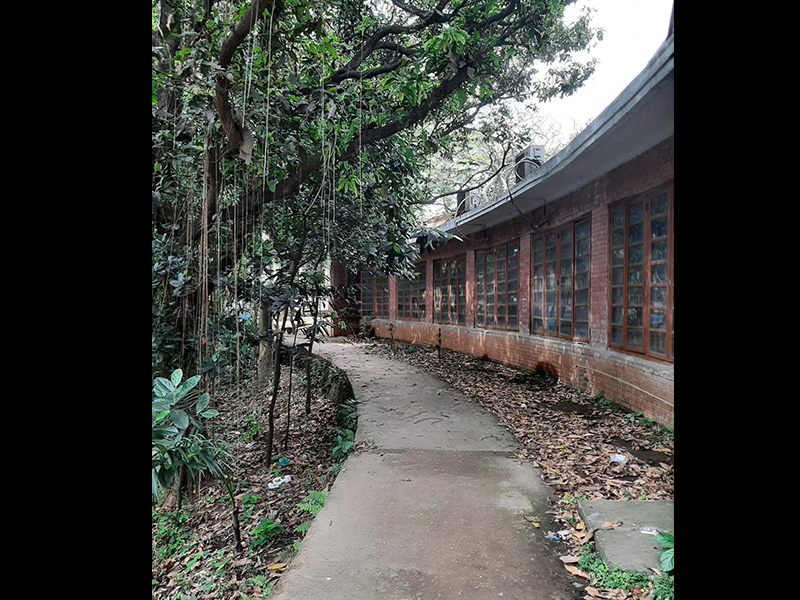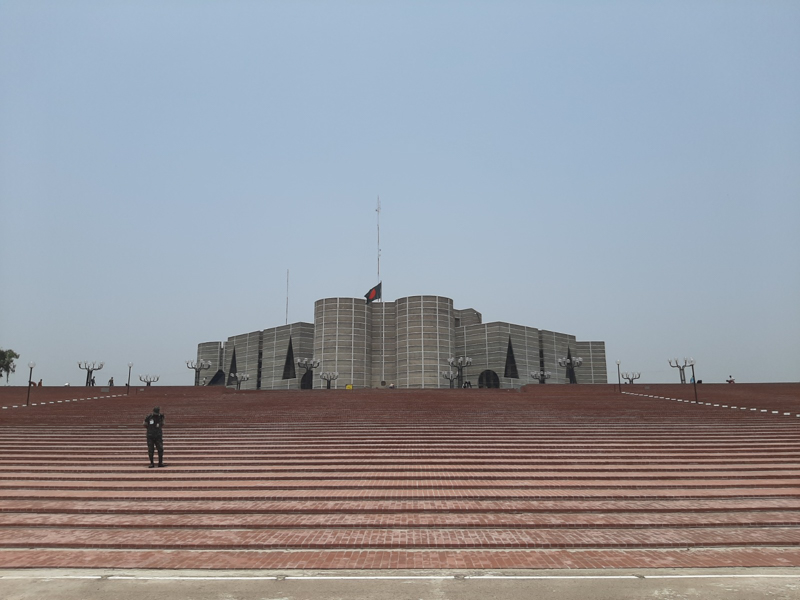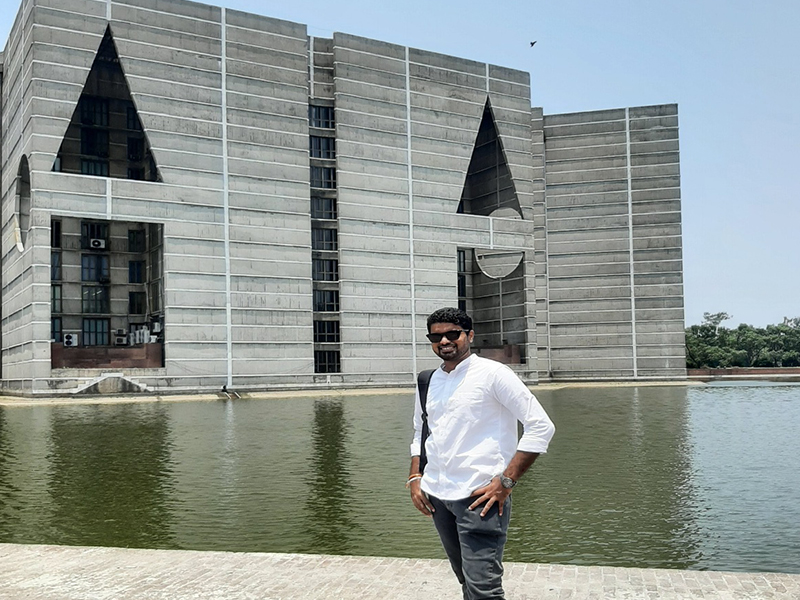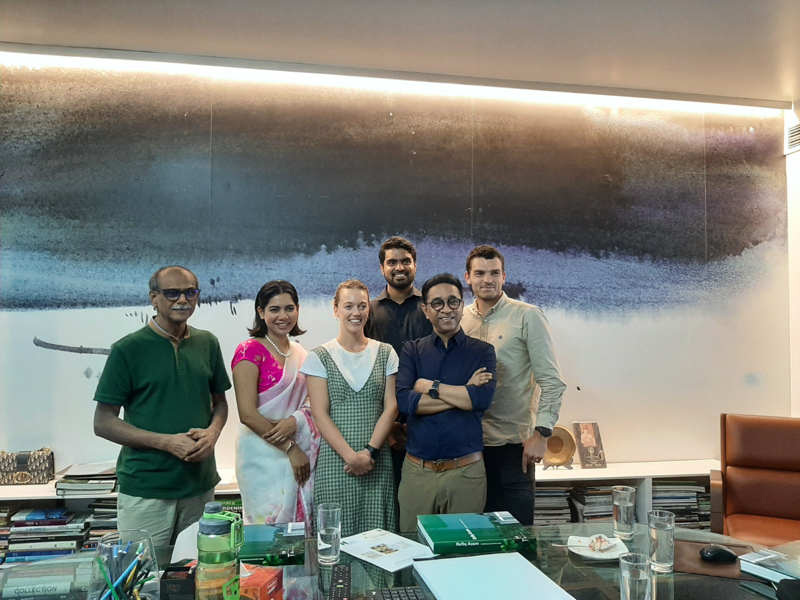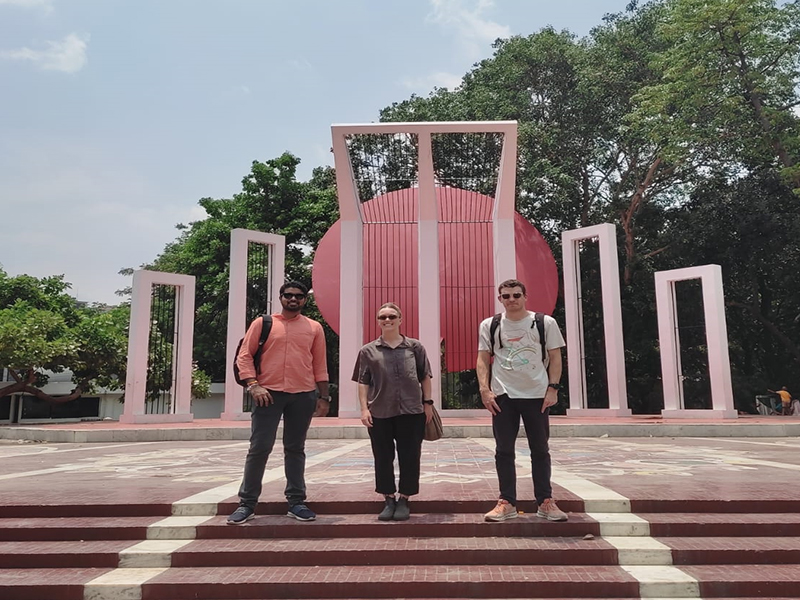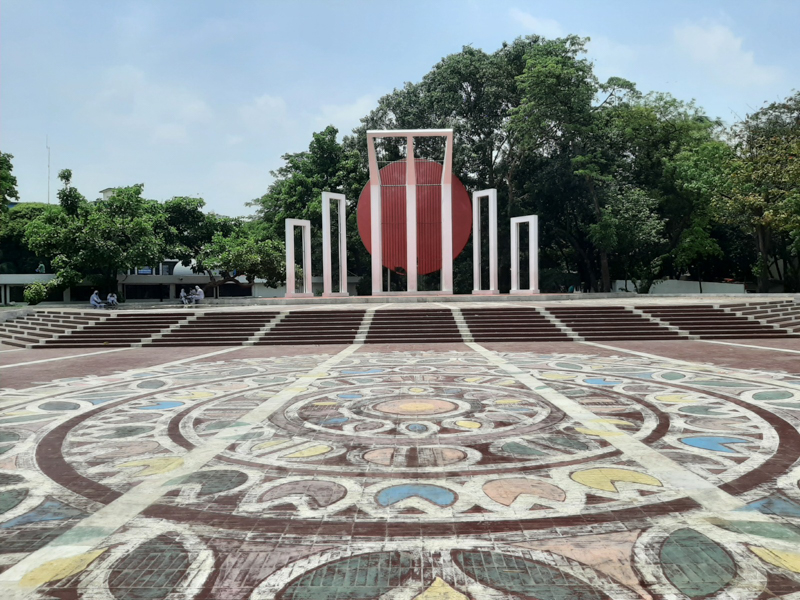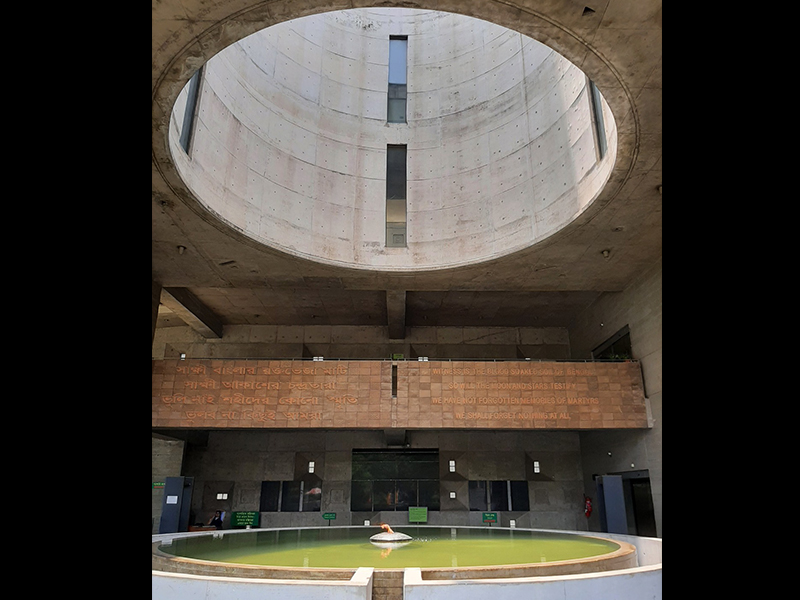"The Ganges flows through the heart of Bengal, like the pulse of our nation, bringing life to the land and its people."
- Michael Madhusudan Dutt -
Traveling through Bangladesh quickly reveals the fluid relationship between nature and human life, showcasing how environmental factors not only impose constraints but also inspire the design of the built environment. The tropical light, in particular, plays a significant role in shaping the architecture seen across many Asian countries. My journey through the city of Dhaka illuminated how architects skillfully manipulate natural elements to breathe life into their creations. This enriching experience was made possible by the Rafiq Azam Travel Bursary.
Sponsored by Shatotto Architecture for Green Living, led by renowned architect Rafiq Azam, the Rafiq Azam Travel Bursary (RATB) offers architecture students the opportunity to explore Bangladesh for 7-15 days. This prestigious award, granted in India, Australia, and Sri Lanka, was awarded to me in 2023, marking the 5th Sri Lankan student who received the honor. As a student of the City School of Architecture, I spent 10 unforgettable days in Dhaka, Bangladesh, exploring the vibrant architecture alongside fellow awardees Samuel Jones and Annie Murphy from Australia.
During my stay, I experienced a rich blend of heritage, architecture, and culture. The tour included urban residences, community projects, colonial buildings, national monuments, and contemporary architecture. Bangladesh, known as the "Land of Rivers," is shaped by its vast river network, which plays a vital role in its agriculture and landscape. This abundance of water, along with other natural elements like light, earth, and air, governs the design of spaces and places, resulting in climatically responsive architecture.
Our journey began with a visit to Old Dhaka, situated along the banks of the Buriganga River. The lively scenes of Chawk Bazaar, with its bustling markets, vendors, and colorful rickshaws, created a vibrant atmosphere. Despite the apparent chaos, I found it to be a beautiful chaos—alive with energy, and the constant ringing of rickshaw bells adding to the spirit of the place. We also had the chance to sample some unique fruits from the local markets.
Among the historic landmarks we visited were Lalbagh Fort, a stunning remnant of the Mughal era known for its perfect symmetry, gardens, and water features, and Ahsan Manzil, which showcased Colonial influences. It was fascinating to see how these spaces, teeming with people, functioned as public sanctuaries amidst the city's hustle, evoking a sense of familiarity reminiscent of the lively atmosphere in Pettah, Colombo.
We also visited contemporary mosques, such as the Mayor Hanif Mosque and the Gulshan Society Mosque, where careful use of geometry, light, and materials created serene spaces of worship. The Mayor Hanif Mosque, designed by Prof. Rafiq Azam, skillfully combines traditional and modern elements, showcasing a unique blend of old and new philosophies.
The tour also introduced us to the pioneering works of modern Bangladeshi architecture, including the renowned architect Mazharul Islam. One of his notable creations, the Institute of Fine Arts, seamlessly blends modern architectural language with climate-responsive and site-sensitive design. Surrounded by water bodies and tree canopies, the building integrates natural ventilation and light, creating a unique sense of place. The use of exposed brick alongside the lush greenery gives the modern structure a tropical and local character, reflecting the heritage and spirit of Bangladesh.
A similar approach was evident at the Aga Khan Academy, designed by British firm Feilden Clegg Bradley Studios in collaboration with Shatotto Architecture. The building skillfully uses exposed brick, open green spaces, and fenestrations to manipulate light and shadow, drawing the surrounding landscape into the architecture. What stood out was how the design drew inspiration from Buddhist Mahaviharas, with a focus on shared spaces and courtyards connected to living areas, creating a serene educational environment for students and staff alike.
The prominence of concrete in contemporary Bangladeshi architecture was apparent during our visit to the Museum of Independence, designed by URBANA. This museum, Bangladesh's first underground museum, is centered around a fountain where water cascades from the ceiling. The design poetically combines architecture with sensory elements—water, light, and sound, offering a powerful narrative of Bangladesh's fight for independence. Similarly, the Liberation War Museum employs a play of light and volumes to guide visitors through a reflective, emotional journey. The centerpiece of this design is the chamber of remembrance and realization, where light gently illuminates a water body that reflects the eternal flame. This interplay between natural elements evokes a profound connection to the forces of nature, symbolizing victory, peace, and contemplation.
It was fascinating to observe how communal life flourished around these monuments, transforming them from mere historical markers into vibrant public spaces that contribute to the pulse of the city. One such example is the Shaheed Minar in Dhaka, a national monument that honors those who lost their lives in the Bengali Language Movement of 1952. This movement arose from the demand to recognize Bengali as one of Pakistan's state languages. The design of the Shaheed Minar features a half-circle of columns symbolizing a mother with her fallen sons, standing on the central dais, with a red sun shining in the background. Situated near Dhaka University, the monument is surrounded by an expansive open space that has become a hub for public life, with street vendors selling food and students gathering to relax. It was intriguing to see how the monument, representing a significant chapter of the nation's history, seamlessly integrates into everyday life, reflecting the people's deep-rooted connection to their history. This merging of history with the present day gave the space a dynamic and meaningful presence within the urban fabric.
The highlight of the trip for me was undoubtedly the National Parliament Complex, designed by the legendary architect Louis Kahn. The way he masterfully crafted light and shadows against a reflective backdrop was truly remarkable. While the planning of the complex reflects Beaux Arts principles, it also seamlessly integrates elements of Mughal design, particularly in its use of geometry and water. Despite its modern aesthetic, the building resonates deeply with the spirit of Bangladesh, symbolizing the nation's intrinsic connection to water. The grand volumes of the structure, combined with its cultural roots, make it more than just an architectural marvel; it tells the story of the country. The central focus on the lower-level library, which emphasizes the importance of knowledge, further enhances the design’s impact, turning it into not just a monument but a living embodiment of the nation's values. Hence, the power of the space lies not only in its formal composition but also in the emotional depth it conveys.
We had the privilege of exploring several public, religious, and residential projects designed by Prof. Rafiq Azam throughout Dhaka, which significantly enriched my understanding of tropical architecture. His vision for transforming Dhaka into a more livable, socially equitable, and safe city was truly inspiring. By incorporating natural elements such as greenery, light wells, spatial volumes, and earthy materials in his multistorey buildings, he demonstrated a creative approach to reviving the city's once-abundant greenery. This innovative design allows for vertical integration of nature, making each floor feel like it’s connected to the ground. It also enhances the connection between the city, the sky, and the surrounding landscape through thoughtfully framed views.
One of the standout residential projects was Haque’s South Leaf. Its design philosophy centered around evoking the client’s nostalgia while intertwining it with new, meaningful memories. Ultimately, this house is not just constructed from bricks; it is built from memories. Haque’s South Leaf serves as a repository of both the joy and sorrow experienced within its walls—a tribute to the original home’s rich history. The ground floor is crafted as a car-free gathering space, enclosed by a horizontal grille and walls adorned with greenery, creating a seamless connection to the surrounding city. This area is a harmonious blend of wind, light, and the gentle sounds of water, symbolizing the tranquility achieved after the country’s victory in the 1971 war and transforming past pain into celebration. The upper floors offer panoramic views of the city, with some spaces featuring carefully framed vistas. Thus, Haque’s South Leaf emerges as a poetic embodiment of brutalist concrete design set against a backdrop of postindustrial romanticism.
Prof. Rafiq’s efforts to transform Dhaka into a more breathable and safer city through various public parks and playgrounds, including Rasulbagh Park and Delwar Hossain Playground, provided us with valuable insights into the role architects can play in enhancing communities through thoughtful design. Witnessing the development of green spaces for communal activities was truly inspiring, as it fosters mental, physical, and emotional well-being within society. His designs and philosophy deeply resonated with me, as they incorporate fundamental natural elements—water, light, earth, and air, while also embracing communal values and aspirations. As a student, I found immense inspiration in how these elements interact to shape spaces and places, creating architecture that is both climatically and locally responsive. This experience has equipped me with valuable lessons to take back to my own country.
Throughout our journey, the Shatotto team worked diligently to ensure we had the best possible experience. I want to extend my heartfelt thanks to Samiha, Bejori, the Shatotto team, Uzma, and Ahnaf for their exceptional hospitality. Their warm and welcoming nature made Sam, Annie, and myself feel right at home. As we explored the rich culture of Bangladesh together, they consistently provided us with authentic experiences each day. Our many conversations sharing our cultures, learning each other’s languages, and exchanging jokes and laughter, added vibrant & cherishing layers to our tour. We feel truly honored to have met such wonderful individuals and to have forged strong new friendships in such a short time. To Sam and Annie, it was a privilege to meet you both and collaborate while sharing our personal experiences throughout the tour.
Our tour concluded with a visit to BRAC University in Dhaka, where we shared our experience on Bangladesh and its architecture, while also connecting with students from the architecture department. This experience was genuinely special, allowing us to deepen our understanding through the dedicated efforts of these students.
Finally, I am immensely grateful to Prof. Rafiq, Archt. Zannat Jui, and the RATB committee for organizing this inspiring tour, which has provided me with lifelong memories that I will cherish. I wholeheartedly hope that the beautiful vision Prof. Rafiq has for Dhaka becomes a reality in the near future, allowing the nation to thrive.
- Chamin Kalubowila -

